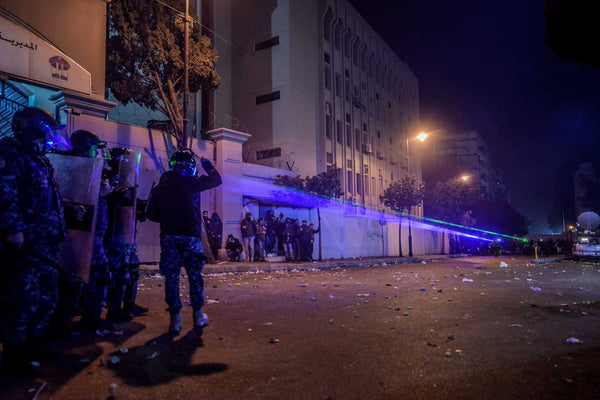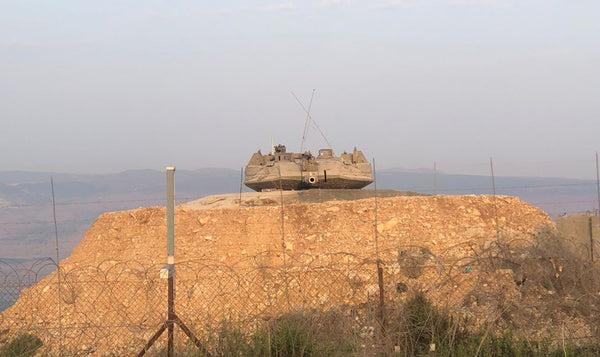A Brief Guide For Filming In Hostile Areas
Conflict Filming is not a Game: A Guide to Safety
The decision to go to a hostile area can have far-reaching and long-term effects, not just on the filmmakers themselves but also on their families and the people they photograph.
Prepare Yourself Mentally
- You can never be too fit or too prepared. Covering a conflict can have its physical and mental consequences.

Beirut 2019
- If you decide that filming in a hostile area is necessary, then the next step should be to carefully research the area to which you are going. It may be useful to consult journalists, NGOs, or other filmmakers who have recent experience of visiting your target area.
- Know the address and phone number of your embassy or other “friendly nation” embassies.
- Where is the shoot? What kind of terrain? Who am I filming? What do people I am filming like or hate?
- Know more about your subject. Always look for the closest hospital, clinic, fire department and keep it on your map.
More Research is Not Enough
Keep checking the news, especially when filming in a conflict zone. Have someone alert you in case of emergencies, since you will most likely be focused on the technical part while you are filming in the conflict area.
- Do you need a film permit? If yes get one! And keep your press ID with you in case it’s needed.
Research the Risk and Decide if it is Worth it

South Lebanon 2020
Respect the communities you are filming. These people will probably open their houses for you to film and will sometimes offer you a place to hide.
- Try to respect or at least understand your difference with them.
- Keep track of everyone you film, get their names and as much information as possible.
- If possible, always get a written consent of the people you are filming. If not, get it on camera.
Bring Cash, Don’t Rely on Cards
Be cautious who you use locally if a civil conflict. Consider who you will take with you in your crew. Do they have previous experience working in hostile environments, conflict or war zones? Are they actually needed? Try not to draw too much attention to your team or self.
- Ensure that you have emergency details of all crew, contact telephone numbers, blood type and any known allergies in case emergency medical treatment is required.
- Try to hire a fixer or a local to travel around with you, this person’s role may well be absolutely crucial, serving as your guide, your translator and can help you to stay safe and secure in an unknown location.
Agree on Communication and Privacy
Agree with your team on the best form of communication (Phone, Radio) Safe words and signs can be helpful.
- Phone and privacy: remove your fingerprint unlock feature from your phone, in many cases security forces will force you to unlock your phone.
- Choose a harder password. and activate a panic button feature or app on your phone that will automatically inform your team and chosen contact when you press on it.
Prepare a List of Equipment
Start with a first aid kit. Power banks are important to keep your phones on. Bring backup batteries and memory cards. Research ways to protect your gear.
- Using a camera cage will protect your camera, and having a good reliable camera bag that can protect your equipment from dust and water and in case of falls is a must. Use reliable brands. You do not want your equipment to break out on you.
- Wear something comfortable, easy to move around and jump with, but that protects your feet from scratches.
- Wear shoes that work for the terrain you are filming in. Sneakers might be a good option for filming in cities, but won’t work in rocky terrain.
Less is More When it Comes to Equipment
If your assignment is not long, stick to what is needed. If an on-camera mic does the job then no need to bring all your sound gear. Ask yourself what equipment you need and what you don’t. (example: is a monopod enough or I need a tripod for this shoot?) In many cases having wireless equipment will help you get rid of extra cable weight and reduce chances or your cables being tangled
- Will you need body armor? Consult an army or military expert about the nature of the conflict and weapons used.
- Consider the weight of the armor and how slower it will make you.
- Consider marking yourself and vehicles with a different color (Yellow, Orange, Blue)
- If needed a press sign can protect your vehicle and team. Note that this labeling does not make you immune to attacks especially in the Middle East.
Keep Changing Memory Cards
In most cases security service members and army members tend to confiscate your memory cards and cameras. This is why exchanging memory cards frequently will help you save as much data as possible. Keep your memory cards safe! A rugged card case will protect your memory cards and keep them from getting lost.
- Backup your data when it’s possible. Use more than 1 hard drive, and if possible, upload your data to a data storage website that you can share with your team or client.
- Find the right camera, in most of the cases the smaller the camera the better you are. Look for the right camera that provides the required quality.
- A camera with a stabilizer is a great addition to our kit since many times you do not have the time or privilege of using a tripod.
- Also use a weather-sealed camera that can take some beating, in many cases you will end up exchanging vehicles or running to safe places. So eventually the camera will get bumped and splashed with water or mud.
- Have an emergency plan in case roads get blocked, or in case of power cuts.
- Download maps in advance in case no WiFi.
- Always be prepared to abandon a shoot if the risks of filming become greater than the benefits.











54 Comments
a7hzo1
w9y9m2
tcy159
zv8odu
67qlz6
Leave a comment
All blog comments are checked prior to publishing